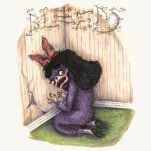25 Years Later, an Expanded Look at Another Monster Hit from R.E.M.
At the height of their fame, R.E.M. made their “loudest and most abrasive” album
Photo by Jem Cohen
“A new sound well-removed from the sickly-sweet tones of the smash hit ‘Shiny Happy People.’”
Those are the words that Australian TV host Brian Armstrong used to describe R.E.M.’s 1994 album Monster a few months after its release. Armstrong may have been laying it on a little thick—“Shiny Happy People,” after all, was written to be sappy on purpose—but it’s not like he wasn’t telling the truth, or even saying anything the band didn’t agree with. At the time, millions upon millions of listeners associated R.E.M. with a tameness that didn’t accurately reflect everything the band had to offer.
Monster, the band’s ninth studio full-length, marked a decisive turn away from the mellow, downtempo vibe of its previous two albums, 1991’s Out of Time and 1992’s Automatic for the People, both of which became huge commercial successes, effectively ending R.E.M.’s position as standard bearers of the alternative underground movement they had emerged from.
A scrappy, up-and-coming cult act for the first eight years of their career, R.E.M. followed in the footsteps of The B-52’s, putting their hometown of Athens, Georgia on the map while retaining a sense that they had come from a quaint, quirky place steeped in down-home modesty. But now, R.E.M. were global pop superstars no longer in the same stratosphere as their contemporaries like The Replacements and Sonic Youth. By all accounts, frontman Michael Stipe, bassist Mike Mills, guitarist Peter Buck and drummer Bill Berry were still adjusting to the barometric changes fame had imposed on their lives by the time they began work on the follow-up to Automatic for the People in October of 1993. The material that ultimately became Monster was in many ways the band’s acknowledgment that there was no turning back.
If you listen to Automatic for the People and Out of Time beforehand, it’s easy to interpret Monster as R.E.M.’s re-assertion of their rock instincts. Stipe himself looks back on Monster as the “loudest and most abrasive” album of the band’s storied career, according to new reflections he offers in the liner notes assembled for this expanded, silver-anniversary edition written by music journalist Matthew Perpetua. Certainly, guitarist Peter Buck cranked up the distortion, and the skeletons of the songs were recorded live in the studio in order to capture a raw, organic feel. As Mike Mills revealed to Radio X just before the release of this package, producer Scott Litt even had the band rehearse the songs in pre-production with a PA to simulate the feeling of playing to a large crowd.
(One caveat: the 15 rather thin-sounding bonus demos that come with this set do not reflect that vibe. Additionally, Scott Litt’s new mix of the album 25 years later is tantamount to sacrilege and a textbook case of why artists shouldn’t tamper with work after the fact. Litt has expressed, in both the liners and a video interview released on the band’s official YouTube, that of the six albums he made with the band, he was most unhappy with his mix for Monster. His decision to present it anew in a more generic, traditional light with much of the auxiliary instrumentation removed and Stipe’s vocals louder in the mix, is completely unnecessary.)
“We needed a shot in the arm,” Stipe said in a new interview from NME. “We knew people wanted to hear [hits like] ‘Losing My Religion,’ ‘Everybody Hurts’ and ‘Man on the Moon,’ the songs that they loved off those two prior albums that we’d never played live. We needed something to counter that with.”
All that said, Monster amounts to more than a “return to roots” kind of effort—if it can even be viewed that way at all. In a career that spans 18 full-length titles over a 28-year stretch, Monster, in some respects, stands apart from the rest of the R.E.M. catalog like a sore thumb: a blinking, neon-hued sore thumb that casts its own distinct glow. Nevertheless, the album also manages to reflect the band’s essence in spite of itself. R.E.M. had actually grown so proficient at writing anthemic singalong choruses by that point that iconic singles such as “What’s the Frequency, Kenneth?” and “Crush with Eyeliner” partially mask the tangled contradictions and undercurrent of strangeness that thread through all but one of the Monster’s songs. Overall, the album meshes garage-rock abadonon with arena-sized posturing, simplicity with experimentation, earnestness with irony and a pointedly dark edge that somehow manages to come off as frivolous.
Earlier in the same decade, U2 had decided to go into full bug-out mode, making a spectacle of themselves via a calculated, self-consciously performative indulgence that was supposed to turn our notions of rock stardom and media saturation on their head. When you hear Monster, it’s clear that R.E.M. were paying attention—Stipe says as much in the new liners. The shaker intro and rhythmic cadence of “Tongue” even bears an uncanny resemblance to the Irish foursome’s 1991 smash single “One.” In a sense, we can look at Monster as a first cousin to U2’s career-redefining Achtung Baby and its zanier younger sibling Zooropa with one key distinction: R.E.M. conceived of Monster as a way to connect with live audiences, not to insert more distance.
-

-

-

-

-

-

-

-

-

-

-

-

-

-

-

-

-

-

-

-

-

-

-

-

-

-

-

-

-

-

-

-

-

-

-

-

-

-

-

-








































